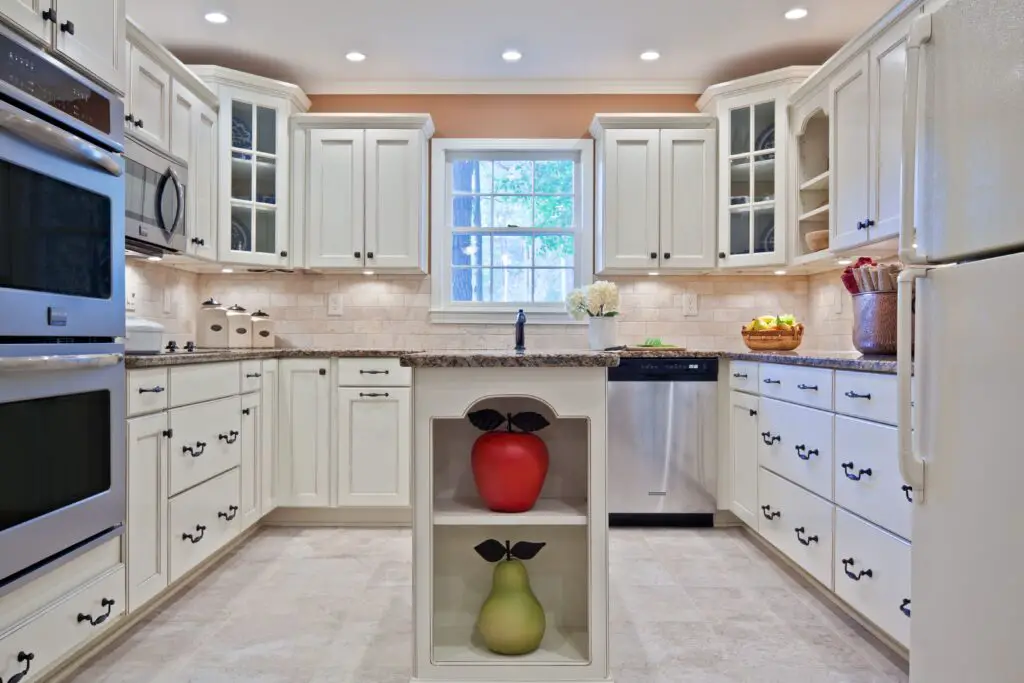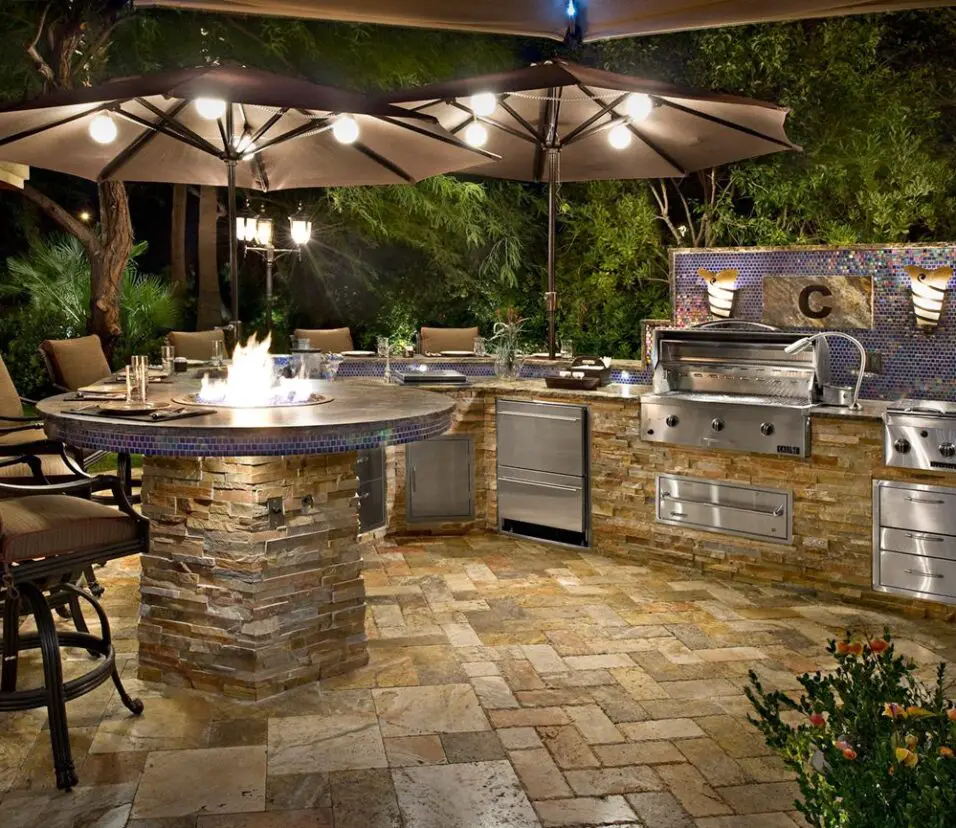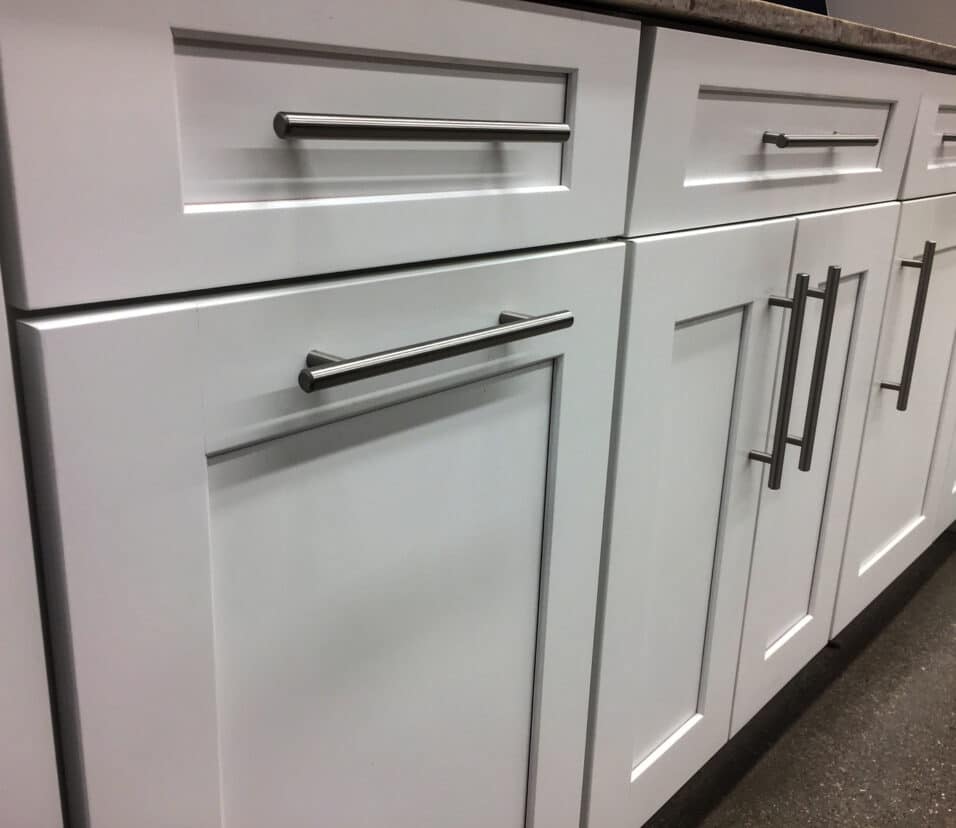How To Get Rid Of Mold Under Kitchen Cabinets
Introduction
How To Get Rid Of Mold Under Kitchen Cabinets: Mold in your kitchen can be a distressing experience, as it not only poses health risks but also compromises the cleanliness and hygiene of your cooking space. Mold growth often occurs in dark and damp areas, and the space beneath kitchen cabinets can be a prime breeding ground. We understand the importance of maintaining a healthy and safe environment for you and your family, and that’s why we’ll provide you with practical tips and expert advice to tackle this issue head-on.
Before we delve into the removal process, we’ll also explore the common causes of mold growth under kitchen cabinets, helping you understand the factors that contribute to this unwelcome problem. Armed with this knowledge, you’ll be better equipped to implement preventative measures and ensure that mold doesn’t return in the future.
From simple home remedies to recommended cleaning products, our aim is to offer you a variety of options suited to different preferences and budgets. Additionally, we’ll emphasize the significance of maintaining good ventilation and controlling humidity levels in your kitchen, as these play crucial roles in preventing mold growth.

How do I stop mould behind my kitchen cabinets?
Ensuring that your kitchen is properly ventilated at all times will help to reduce the possibility of moisture build-up and will therefore keep mould at bay. If you do not have an extractor fan above your cooker, the steam you generate whilst cooking will create moisture on kitchen walls and surfaces.
Mold requires specific conditions to grow, primarily moisture and darkness. In the kitchen, the presence of water from leaky pipes, condensation, or spills, combined with the lack of proper ventilation and sunlight behind the cabinets, creates an ideal environment for mold to thrive. Identifying these underlying causes is crucial to developing an effective prevention strategy.
Before implementing preventive measures, conduct a thorough inspection to identify any existing mold. Check for visible signs of mold, such as discoloration or musty odors, and pay close attention to areas with potential moisture sources. If mold is present, clean it immediately using a mixture of water and mild detergent. Wear protective gear like gloves and a mask to avoid inhalation of mold spores during the cleaning process.
Proper ventilation is a key factor in preventing mold growth. Ensure that your kitchen has adequate air circulation by installing exhaust fans or range hoods. These devices will help to expel moisture and airborne contaminants, reducing the likelihood of mold formation behind the cabinets.
Address any water leaks or dampness issues promptly. Check for signs of water damage around your sink, dishwasher, and pipes. Repair or replace damaged seals, pipes, or faucets to prevent further water intrusion behind the cabinets.
How do you get rid of mold under kitchen sink cabinets?
Instead of using bleach and water for cleaning, you can also use natural products including vinegar, tea tree oil or grapefruit seed extract. These substances have anti-microbial properties and can also help remove the smell of mold in addition to disinfecting the area.
Mold growth not only poses health risks but also indicates underlying moisture issues that need immediate attention. Dealing with mold under kitchen sink cabinets requires a systematic approach to effectively eliminate it and prevent its return. In this comprehensive guide, we will walk you through the steps to safely and successfully remove mold from under your kitchen sink cabinets and implement preventive measures to keep it at bay.
Before starting the mold removal process, ensure your safety. Wear protective gear, including gloves, goggles, and a mask, to avoid direct contact with mold spores and prevent inhalation.
The key to eradicating mold under kitchen sink cabinets is to identify and rectify the source of moisture that is fueling its growth. Check for leaky pipes, dripping faucets, or condensation issues. Repair or replace any faulty plumbing components to eliminate the water source.
Clear out the contents from under the sink to access the affected area. Thoroughly clean the cabinet interior and the mold-infested surfaces using a mixture of water and mild detergent. Scrub away visible mold growth gently, taking care not to spread spores into the air.
For stubborn mold or to ensure complete eradication, use specialized mold removal solutions. Commercial mold cleaners or natural alternatives like vinegar or hydrogen peroxide can be effective in killing and removing mold spores. Always follow the product instructions and ventilate the area while using these solutions.
After cleaning, allow the area to dry completely. Use fans or dehumidifiers to expedite the drying process, ensuring that no moisture remains, as mold thrives in damp environments.
How do you permanently remove mold from cabinets?
Mold in Cabinets
Make a solution of half water and half detergent by combining it into a spray bottle, or use a commercial mold cleaner. Use the solution and a scrubbing brush (or toothbrush for corners and hard-to-reach areas) to remove the mold. Wipe the residue with a wet clean rag and rinse with a dry rag.
Before attempting to remove mold, conduct a thorough assessment of the affected cabinets. Identify the extent of the mold growth and check for any structural damage. If the mold has caused significant damage, consult a professional for proper evaluation and repairs.
Ensure your safety by wearing appropriate protective gear, including gloves, a mask, and goggles, to avoid direct contact with mold spores and inhaling airborne particles.
Start the cleaning process by clearing out the cabinet’s contents. Wipe away any surface mold using a mixture of water and mild detergent. For more stubborn mold, consider using commercial mold cleaners or natural alternatives like vinegar or hydrogen peroxide. Thoroughly scrub the affected areas, including corners and crevices.
After cleaning, allow the cabinets to dry completely. Use fans or dehumidifiers to expedite the process and ensure no moisture remains, as damp conditions encourage mold growth.
To prevent mold from returning, consider applying mold-resistant paint or sealant to the cleaned and dried surfaces. These products create a protective barrier, making it more challenging for mold to grow again.
Mold growth is often a symptom of underlying moisture problems. Investigate and address any issues that contribute to excess humidity or water intrusion, such as leaky pipes, faulty seals, or poor ventilation.
How do I get rid of mold in my kitchen?
Add one-quarter of a tablespoon of baking soda to a spray bottle of water and shake until it has dissolved. Spray the moldy area with the baking soda and water solution, then use a scrub brush to remove mold from the surface. Next, rinse the surface with water to remove any residue and baking soda.
Before tackling the mold issue, identify the source of moisture that is fueling its growth. Common sources include leaks, condensation, and poor ventilation. Fixing these underlying issues is crucial to prevent mold from recurring.
When dealing with mold, prioritize your safety. Wear protective gear, such as gloves, goggles, and a mask, to avoid direct contact with mold spores and prevent inhalation of airborne particles.
Begin the mold removal process by cleaning visible mold from surfaces using a mixture of water and mild detergent. For more stubborn mold, consider using specialized mold removal products. Thoroughly scrub the affected areas, including corners and crevices, to ensure complete removal.
Natural remedies like white vinegar, hydrogen peroxide, or baking soda can also be effective in removing mold. These eco-friendly alternatives are safe to use and have anti-fungal properties that help eliminate mold.
After cleaning, ensure the kitchen is thoroughly dried. Use fans or dehumidifiers to reduce moisture levels, as mold thrives in damp environments. Proper ventilation is essential to speed up the drying process.
To prevent mold from returning, apply mold-resistant paint or sealant to the cleaned and dried surfaces. These products create a protective barrier, making it more challenging for mold to grow again.

Why is mold growing in my kitchen cabinets?
Kitchen mold is often caused by humidity from cooking, washing dishes, or using a dishwasher. Food or food particles in your cabinets can also grow mold. Mold thrives where there is moisture, humidity and little ventilation. When the interior of a kitchen cabinet becomes wet and the dampness lingers, mold can develop.
One of the primary culprits for mold growth in kitchen cabinets is excess moisture. The kitchen is a high-humidity environment, especially near the sink, dishwasher, or under cabinets that are in proximity to water sources. Accumulated water from spills, leaky pipes, or inadequate ventilation creates a damp environment that encourages mold growth.
Inadequate ventilation is another major factor that fosters mold growth in kitchen cabinets. Proper ventilation is crucial in reducing humidity and expelling moisture-laden air, preventing it from settling in confined spaces like cabinets.
Food residues and spills that are not promptly cleaned up provide organic matter for mold to feed on. Cabinets with crumbs, spills, or food debris are more likely to harbor mold colonies, especially in dark and hard-to-reach areas.
Cracks, gaps, or loose seals in kitchen cabinets can allow moisture to seep in, promoting mold growth. Water can infiltrate these openings and remain trapped, providing an ideal environment for mold to thrive.
Mold prefers dark, poorly lit areas, making the insides of kitchen cabinets susceptible to mold growth, especially in cabinets placed against exterior walls or in areas with limited sunlight.
Undetected leaks behind kitchen cabinets can lead to long-term mold growth. Inspect the area around your sink, dishwasher, and other plumbing fixtures for signs of water damage or mold.
Can mold in kitchen make you sick?
In some instances, mold can definitely make you sick, especially if you have allergies or asthma. Some people experience symptoms such as constant migraines, headaches or shortness of breath while others report brain fog as well; some may also develop fatigue and depression.
Exposure to mold spores can trigger allergic reactions in some individuals. Common symptoms include sneezing, coughing, itchy or watery eyes, and a runny or congested nose. Those with allergies or asthma may experience worsened symptoms when exposed to mold, leading to increased respiratory distress.
Prolonged exposure to mold spores in the kitchen can lead to more severe respiratory issues, particularly in vulnerable individuals. It may cause or exacerbate conditions such as asthma, bronchitis, or chronic obstructive pulmonary disease (COPD).
Mold can produce mycotoxins, which are harmful substances released into the air. Inhaling mycotoxins can lead to respiratory infections, which may present as a persistent cough, fever, chest pain, or difficulty breathing.
Individuals with weakened immune systems, such as those undergoing cancer treatments or with HIV/AIDS, are more susceptible to mold-related health problems. Mold exposure can lead to opportunistic infections, putting their health at further risk.
Direct contact with mold or mycotoxins can cause skin irritation and rashes, especially for those with sensitive skin.
While less common, some studies suggest that prolonged exposure to certain types of mold and mycotoxins may be associated with neurological symptoms, including headaches, dizziness, memory problems, and mood changes.
Living in an environment with mold exposure has been linked to chronic fatigue syndrome, which can lead to persistent fatigue, muscle pain, and difficulties in concentration.
Why does mold keep growing in my kitchen?
Poor ventilation in many kitchens compounds the problems caused by excess moisture and humidity. Leaky plumbing, faulty weatherproofing and defective roofing materials can also contribute to mold problems in the kitchen, as well as
elsewhere in the house.
The most common reason for persistent mold growth in the kitchen is excess moisture. Kitchens are high-humidity areas, with activities like cooking, dishwashing, and spills contributing to increased moisture levels. If not adequately managed, this moisture can create an ideal environment for mold to thrive.
Inadequate ventilation can trap moisture in your kitchen, allowing mold to flourish. Without proper air circulation, humid air can accumulate in confined spaces, such as cabinets and corners, fostering mold growth.
Undetected leaks or water intrusion in your kitchen can lead to continuous moisture buildup, providing the perfect breeding ground for mold. Addressing and repairing these leaks promptly is crucial to preventing further mold growth.
Mold feeds on organic matter, such as food particles, crumbs, and spills. If your kitchen is not cleaned regularly or thoroughly, these food sources can sustain mold growth and lead to persistent infestations.
Kitchen cabinets, especially those under sinks or near water sources, are prone to mold growth due to their dark and often damp conditions. Improper ventilation and water leakage can exacerbate this issue.
Mold thrives in dark, poorly lit areas. If your kitchen receives minimal natural light, certain corners and areas may be more susceptible to mold growth.
Even after cooking or using appliances, residual humidity can linger in the kitchen. If not promptly addressed, this lingering humidity can create an environment conducive to mold growth.
How do I keep moisture out of my kitchen cabinets?
Here are some helpful tips for preventing humidity in your cabinet:
- Keep An Eye On Your Home’s Humidity Level.
- In your kitchen, use vents and exhaust fans.
- Fix any leaks or dampness in the plumbing system.
- Select the material with care.
- Before storing anything, make sure it’s clean and dry.
Ensure your kitchen has adequate ventilation to prevent moisture from getting trapped inside the cabinets. Install exhaust fans or range hoods to expel steam and moisture while cooking. These ventilation options effectively reduce humidity levels in your kitchen and minimize moisture accumulation inside the cabinets.
After cleaning your kitchen or using appliances that generate steam, wipe down the surfaces inside the cabinets to keep them dry. This simple habit prevents moisture from lingering and prevents the growth of mold or mildew.
Seal gaps or cracks around the cabinets with silicone caulk. This prevents moisture from seeping into the cabinet interiors through crevices and ensures a tight seal to keep moisture out.
Consider using cabinet liners or drawer liners made of moisture-resistant materials. These liners act as a protective barrier and help prevent moisture from reaching the cabinet’s interior surfaces.
Monitor indoor humidity levels using a hygrometer and aim to keep them between 30% to 50%. If necessary, use a dehumidifier to control excess humidity and prevent moisture buildup in the kitchen.
Opt for moisture-resistant materials when renovating or installing new cabinets. Moisture-resistant plywood or composite wood with a waterproof finish can significantly reduce the risk of water damage and mold growth.
Ensure the cabinet exteriors are adequately protected from moisture as well. Use waterproof paint or sealant on the cabinet surfaces to create a barrier against water intrusion.
Regularly inspect the plumbing beneath the sink and adjacent areas to identify and fix any leaks promptly. Repairing leaks is essential in preventing moisture from spreading to the cabinet interiors.

Conclusion
First and foremost, you have become familiar with the common causes of mold under kitchen cabinets, such as moisture buildup and poor ventilation. Armed with this knowledge, you can proactively implement preventive measures to keep mold at bay in the future. You have also discovered a variety of effective methods to remove mold, ranging from simple home remedies like vinegar and baking soda to specialized cleaning products.
Whether you opt for natural solutions or commercial cleaners, you now know how to safely and under sink efficiently eliminate mold colonies, restoring cleanliness and hygiene to your kitchen. Furthermore, you have learned the importance of regularly inspecting and maintaining your kitchen cabinets, sealing any gaps or cracks that could lead to moisture accumulation. By staying vigilant and addressing any issues promptly, you can prevent mold from taking hold and ensure your cabinets remain mold-free.
Remember, good ventilation and humidity control are essential elements in mold prevention. Properly ventilating your kitchen and using exhaust fans while cooking can significantly reduce the chances of mold growth under your cabinets. Lastly, always prioritize safety when dealing with mold. Use protective gear, such as gloves and masks, to avoid exposure to mold spores during the cleaning process.








